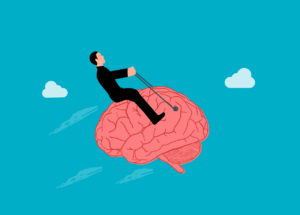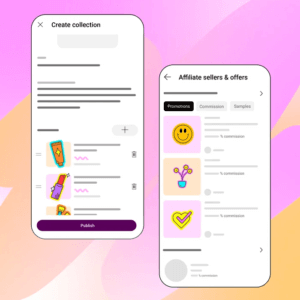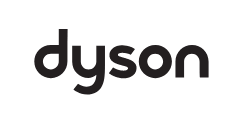In today’s competitive business landscape, understanding your customers’ needs and preferences is paramount. To succeed, especially in the realm of digital marketing, you must go beyond surface-level interactions and delve deep into their experiences. This is where customer journey mapping, an important component of a successful digital marketing strategy, comes into play. It’s a powerful tool that can help businesses of all sizes boost customer satisfaction, enhance loyalty, and drive growth.
What Is Customer Journey Mapping?
At its core, customer journey mapping is the process of visualizing and understanding a customer’s interactions with your brand throughout their entire lifecycle. It encompasses every touchpoint, from initial awareness and consideration to the post-purchase phase. The goal is simple: to gain insights into how customers perceive and engage with your brand at every step of their journey. Here’s why Does Customer Journey Mapping Matter:
- Enhanced Customer Understanding: One of the primary benefits of journey mapping is gaining a deeper understanding of your customers. By walking in their shoes and experiencing your brand as they do, you can identify pain points, preferences, and areas for improvement.
- Improved Customer Experience: Armed with insights from your mapping efforts, you can refine and optimize the customer experience. This might involve streamlining processes, enhancing customer support, or personalizing interactions.
- Increased Loyalty: Happy customers are loyal customers. When you address their needs and provide a seamless journey, you’re more likely to foster customer loyalty and advocacy.
- Identifying Opportunities: Mapping can reveal untapped opportunities in your customer journey. Maybe there’s a stage where customers drop off, or a touchpoint where you can upsell or cross-sell effectively.
How to create a customer journey map
To create a customer journey map, businesses typically follow these steps:
- Define Your Customer Personas: Create detailed customer personas, including demographics, behaviors, and goals.
- Identify Touchpoints: Map out all customer touchpoints, both digital and physical, they might encounter during their journey.
- Document Customer Goals: Understand what customers are trying to achieve at each stage of their journey.
- Highlight Pain Points: Identify obstacles or pain points customers may experience.
- Measure and Iterate: Continuously measure the effectiveness of your CJM and gather feedback for ongoing improvements.
- Identify Customer Segments: Determine which customer segments you want to focus on and create a CJM for each.
- Define CJM Scope: Specify the scope of your CJM, whether it’s for a specific product, service, or customer segment.
- Gather Customer Data: Collect information about your customers’ needs, pain points, and motivations through surveys, interviews, and analytics.
- Create Visual CJM: Develop a visual representation of the customer journey, which can be a flowchart or diagram.
- Identify Improvement Opportunities: Use the CJM to pinpoint opportunities to enhance the customer experience, such as reducing friction in processes or improving support.
- Share CJM with Team: Ensure your team is aligned on the CJM to collectively focus on improving the customer experience.
Different types of customer journey maps
There are different types of customer journey maps that businesses can create, depending on their industry and business type. Some common types of CJM include:
- For a specific product or service:steps that customers take when purchasing or using a specific product or service. For example, a clothing retailer might create a CJM for customers who are purchasing a new dress.
- For a specific customer segment: steps that customers in a specific segment take when interacting with a company. For example, a technology company might create a CJM for enterprise customers.
- For the entire customer lifecycle: steps that customers take from awareness to purchase to advocacy. For example, a software company might create a CJM for customers who are signing up for a free trial of their product.
Comparison table of different customer journey maps based on industry/business type:
| Industry/Business | Common Customer Journey Maps |
|---|---|
| E-commerce | Customer journey map for a specific product or service (e.g., purchasing a new dress), customer journey map for a specific customer segment (e.g., enterprise customers), customer journey map for the entire customer lifecycle (e.g., signing up for a free trial, subscribing to a product, becoming a loyal customer) |
| Software | Customer journey map for a specific product or service (e.g., signing up for a free trial of a new software product), customer journey map for a specific customer segment (e.g., enterprise customers), customer journey map for the entire customer lifecycle (e.g., signing up for a free trial, subscribing to a product, becoming a loyal customer) |
| SaaS | Customer journey map for a specific product or service (e.g., signing up for a free trial of a SaaS product), customer journey map for a specific customer segment (e.g., enterprise customers), customer journey map for the entire customer lifecycle (e.g., signing up for a free trial, subscribing to a product, becoming a loyal customer) |
| Financial services | Customer journey map for a specific product or service (e.g., opening a new bank account), customer journey map for a specific customer segment (e.g., high-net-worth individuals), customer journey map for the entire customer lifecycle (e.g., opening a new bank account, applying for a loan, investing in stocks) |
| Retail | Customer journey map for a specific product or service (e.g., purchasing a new dress), customer journey map for a specific customer segment (e.g., millennials), customer journey map for the entire customer lifecycle (e.g., browsing products online, visiting a store, making a purchase) |
Useful Tools for Customer Journey Mapping
Customer research tools can be used to gather data about your customers’ needs, experiences, and pain points. This data can be used to create more accurate and insightful customer journey maps.
- Miro: A collaborative whiteboard and diagramming tool that can be used to create and share customer journey maps.
- Lucidchart: Another popular diagramming tool that can be used to create customer journey maps. It also offers a variety of templates and shapes to get you started.
- Gliffy: A more lightweight diagramming tool that is well-suited for creating simple customer journey maps.
- Smaply: A dedicated customer journey mapping tool that offers a variety of features to help you create and manage your maps.
- Custellence: Another dedicated customer journey mapping tool that offers a variety of features, including collaboration, analytics, and reporting.
In addition to these dedicated customer journey mapping tools, there are a number of other tools that can be used to support the customer journey mapping process. For example, you can use customer research tools to gather data about your customers’ needs and experiences, and you can use analytics tools to track customer behavior on your website and other digital channels.








